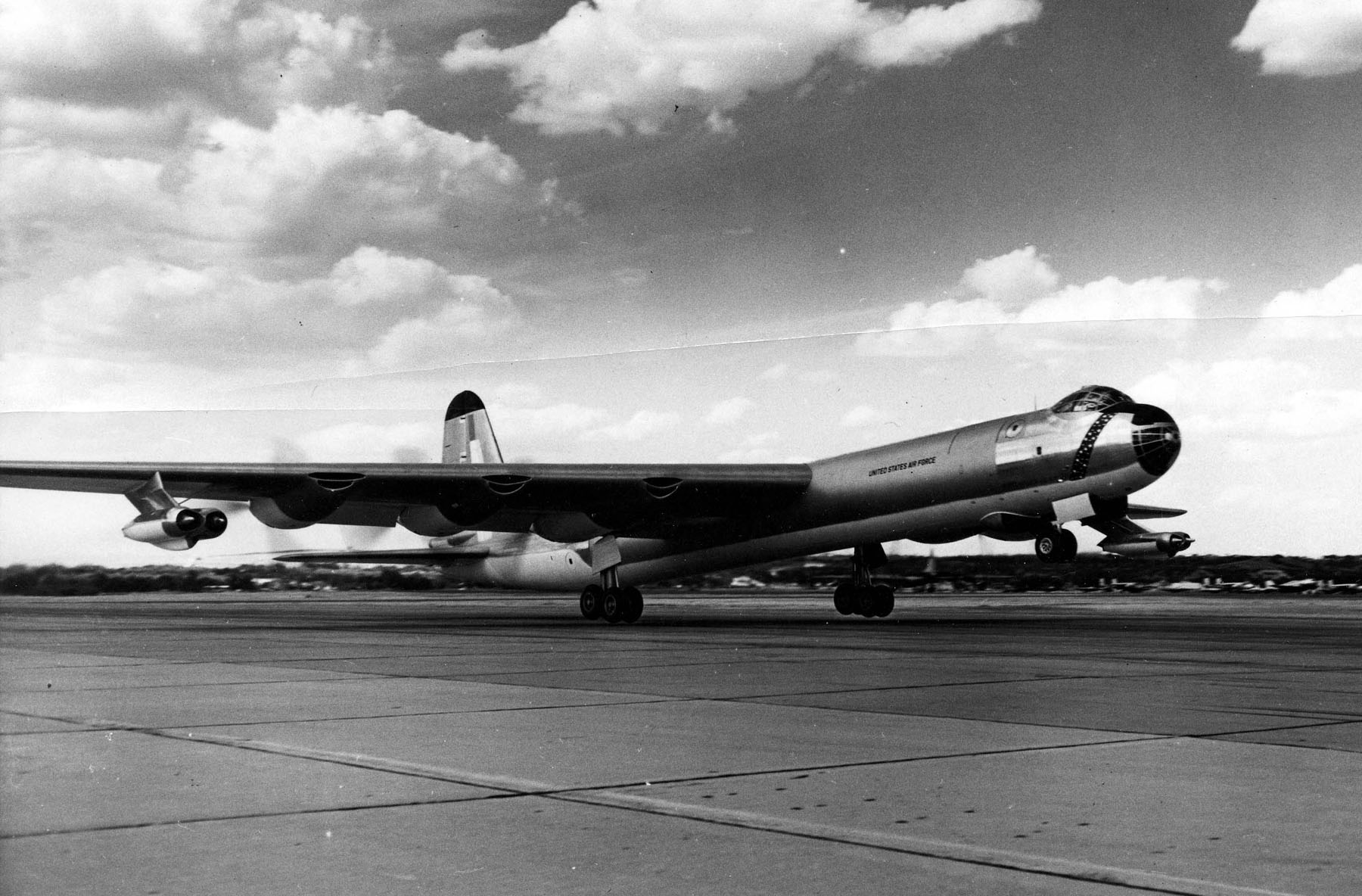
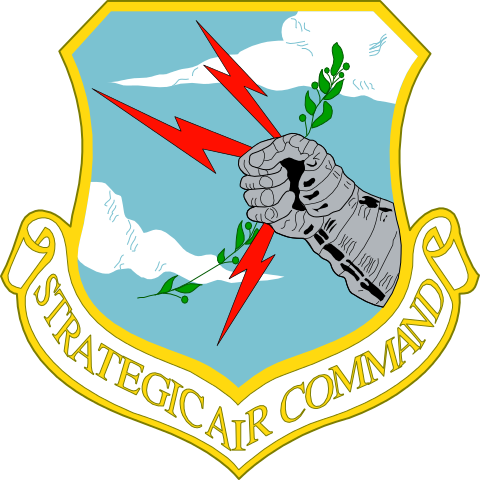 The Last Peacemaker: This gigantic airplane, a Convair B-36J-75-CF Peacemaker, serial number 52-2827, was the very last of the ten-engine strategic bombers built by the Convair Division of General Dynamics at Fort Worth, Texas. It was completed 1 July 1954. On 14 August, it was delivered to the Strategic Air Command, 92nd Bombardment Wing, Heavy, at Fairchild Air Force Base, Washington. In April 1957, 52-2827 was assigned to the 95th Bombardment Wing, Heavy, at Biggs Air Force Base, El Paso, Texas.
The Last Peacemaker: This gigantic airplane, a Convair B-36J-75-CF Peacemaker, serial number 52-2827, was the very last of the ten-engine strategic bombers built by the Convair Division of General Dynamics at Fort Worth, Texas. It was completed 1 July 1954. On 14 August, it was delivered to the Strategic Air Command, 92nd Bombardment Wing, Heavy, at Fairchild Air Force Base, Washington. In April 1957, 52-2827 was assigned to the 95th Bombardment Wing, Heavy, at Biggs Air Force Base, El Paso, Texas.
The last one built, 52-2827 was also the last operational B-36.
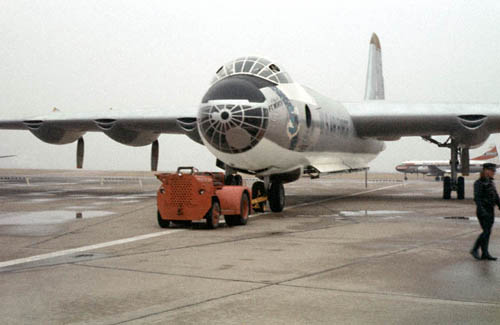
On 12 February 1959, after 4 years, 5 months, 30 days service, the Air Force returned the bomber to Fort Worth. 52-2827 departed Biggs Air Force Base at 11:00 a.m., under the command of Major Frederick J. Winter. Other pilots were Colonel Gerald M. Robinson, commanding the 95th Wing, and Captain Wilson P. Smith. (Colonel Robinson flew as first pilot during the takeoff, while Major Winter flew the landing.) The bomber’s crew were hand-picked, and included two navigators, two flight engineers, an observer, two radio operators, two gunners and a crew chief. Ten newspaper, radio and television reporters were on board as well.
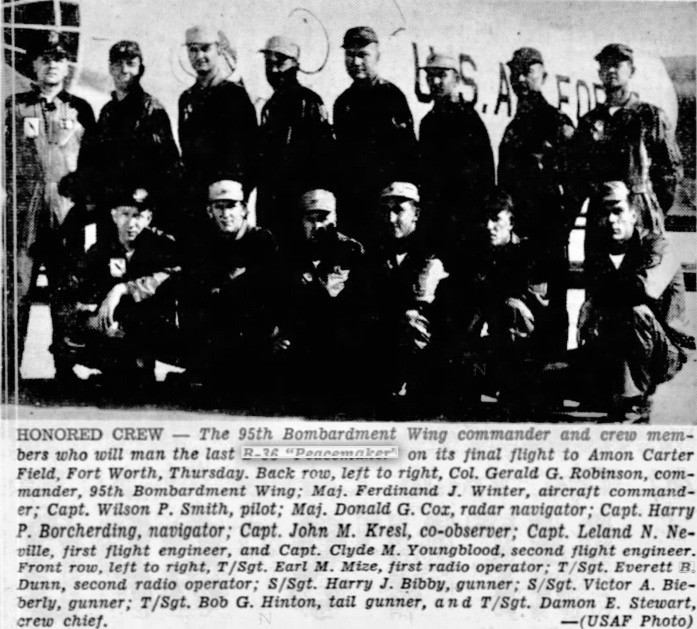
The B-36 touched down at Amon Carter Field at 2:55 p.m. The Peacemaker’s log book was closed out with a total of 1,414 hours, 50 minutes, flight time.
After a ceremony attended by thousands, the bomber was officially retired. A bugler blew “Taps,” and then the Peacemaker was towed away.
It was put on display at Amon Carter Field. After decades of neglect, the bomber was placed in the care of the Pima Air and Space Museum at Tucson for restoration and display.
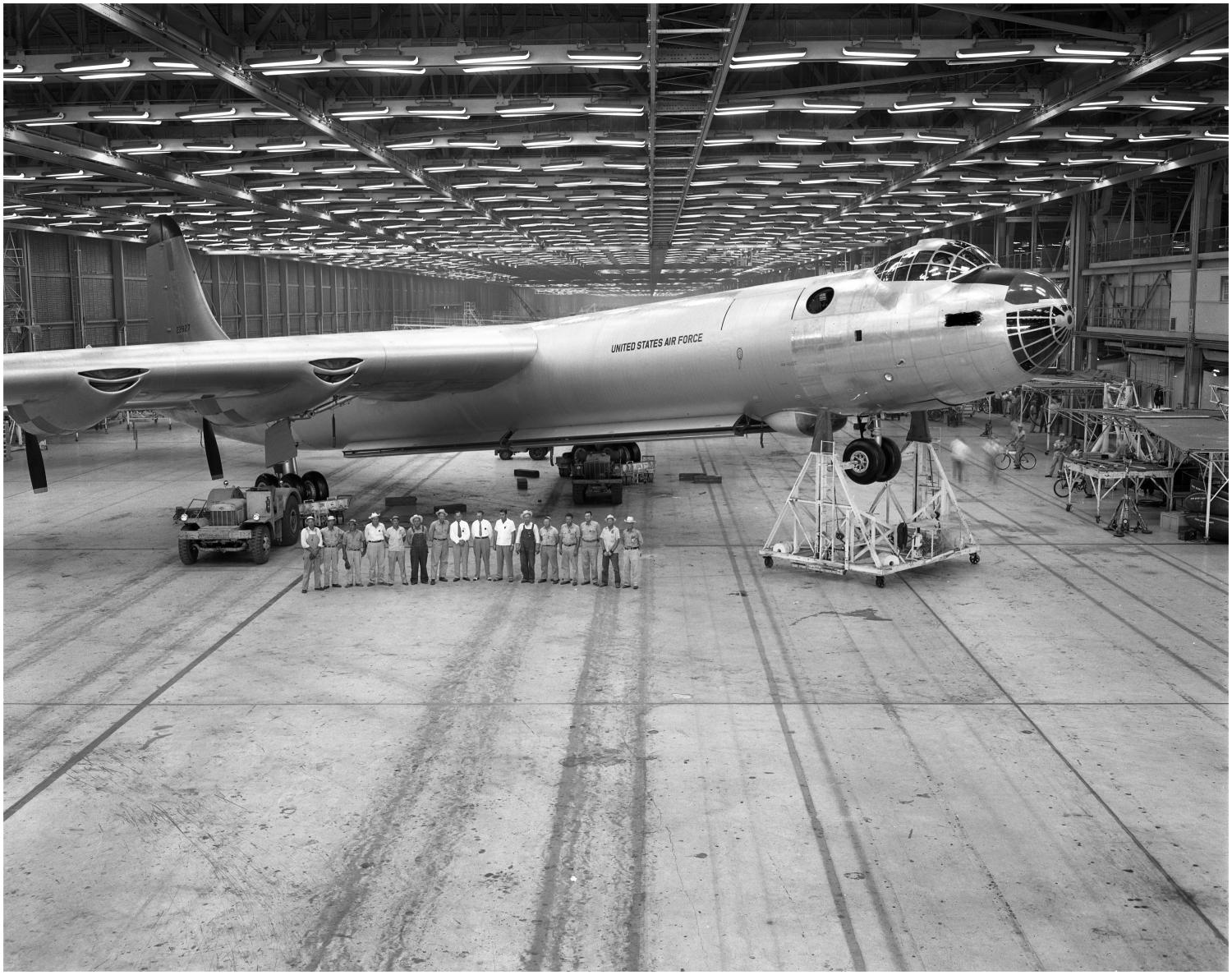
 Convair B-36J 52-2827 is one of 14 “Featherweight III” high altitude variants. It was built without the six retractable defensive gun turrets of the standard B-36, retaining only the two M24A1 20 mm autocannons in the tail. This reduced the crew requirement to 13. It is 162 feet, 1 inch (49.403 meters) long with a wingspan of 230 feet (70.104 meters) and overall height of 46 feet, 9 inches (14.249 meters). The empty weight is 166,125 pounds (75,353 kilograms) and loaded weight is 262,500 pounds (119,068 kilograms). Maximum takeoff weight is 410,000 pounds (185,973 kilograms).
Convair B-36J 52-2827 is one of 14 “Featherweight III” high altitude variants. It was built without the six retractable defensive gun turrets of the standard B-36, retaining only the two M24A1 20 mm autocannons in the tail. This reduced the crew requirement to 13. It is 162 feet, 1 inch (49.403 meters) long with a wingspan of 230 feet (70.104 meters) and overall height of 46 feet, 9 inches (14.249 meters). The empty weight is 166,125 pounds (75,353 kilograms) and loaded weight is 262,500 pounds (119,068 kilograms). Maximum takeoff weight is 410,000 pounds (185,973 kilograms).
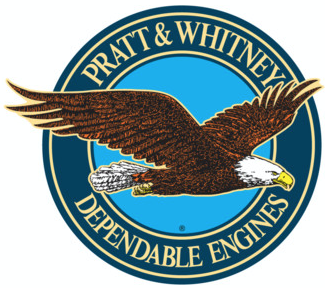 The B-36J has ten engines. There are six air-cooled, supercharged 4,362.49 cubic-inch-displacement (71.488 liter) Pratt & Whitney Wasp Major C6 (R-4360-53) four-row, 28-cylinder radial engines placed inside the wings in a pusher configuration. These had a compression ratio of 6.7:1 and required 115/145 aviation gasoline. The R-4360-53 had a Normal Power rating of 2,800 horsepower at 2,600 r.p.m. Its Military Power rating was 3,500 horsepower at 2,800 r.p.m., and 3,800 horsepower at 2,800 r.p.m. with water injection—the same for Takeoff. The engines turned three-bladed Curtiss Electric constant-speed, reversible propellers with a diameter of 19 feet, 0 inches (5.791 meters) through a 0.375:1 gear reduction. The R-4360-53 is 9 feet, 9.00 inches (2.972 meters) long, 4 feet, 7.00 inches (1.397 meters) in diameter, and weighs 4,040 pounds (1,832.5 kilograms).
The B-36J has ten engines. There are six air-cooled, supercharged 4,362.49 cubic-inch-displacement (71.488 liter) Pratt & Whitney Wasp Major C6 (R-4360-53) four-row, 28-cylinder radial engines placed inside the wings in a pusher configuration. These had a compression ratio of 6.7:1 and required 115/145 aviation gasoline. The R-4360-53 had a Normal Power rating of 2,800 horsepower at 2,600 r.p.m. Its Military Power rating was 3,500 horsepower at 2,800 r.p.m., and 3,800 horsepower at 2,800 r.p.m. with water injection—the same for Takeoff. The engines turned three-bladed Curtiss Electric constant-speed, reversible propellers with a diameter of 19 feet, 0 inches (5.791 meters) through a 0.375:1 gear reduction. The R-4360-53 is 9 feet, 9.00 inches (2.972 meters) long, 4 feet, 7.00 inches (1.397 meters) in diameter, and weighs 4,040 pounds (1,832.5 kilograms).
 Four General Electric J47-GE-19 turbojet engines are suspended under the wings in two-engine pods. The J47 is a single-shaft axial-flow turbojet engine with a 12-stage compressor section, 8 combustion chambers, and single-stage turbine. The J47-GE-19 was modified to run on gasoline and was rated at 5,200 pounds of thrust (23.131 kilonewtons).
Four General Electric J47-GE-19 turbojet engines are suspended under the wings in two-engine pods. The J47 is a single-shaft axial-flow turbojet engine with a 12-stage compressor section, 8 combustion chambers, and single-stage turbine. The J47-GE-19 was modified to run on gasoline and was rated at 5,200 pounds of thrust (23.131 kilonewtons).
The B-36J Featherweight III had a cruise speed of 230 miles per hour (370 kilometers per hour) and a maximum speed of 418 miles per hour (673 kilometers per hour). The service ceiling was 43,600 feet (13,289 meters) and its combat radius was 3,985 miles (6,413 kilometers). The maximum range was 10,000 miles (16,093 kilometers).
The B-36 was designed during World War II and nuclear weapons were unknown to the Consolidated-Vultee Aircraft Corporation engineers. The bomber was built to carry up to 86,000 pounds (39,009 kilograms) of conventional bombs in the four-section bomb bay. It could carry the 43,600 pound (19,777 kilogram) T-12 Cloudmaker, a conventional explosive earth-penetrating bomb. When armed with nuclear weapons, the B-36 could carry several Mk.15 3.8 megaton thermonuclear bombs. By combining the bomb bays, one Mk.17 15-megaton thermonuclear bomb could be carried.
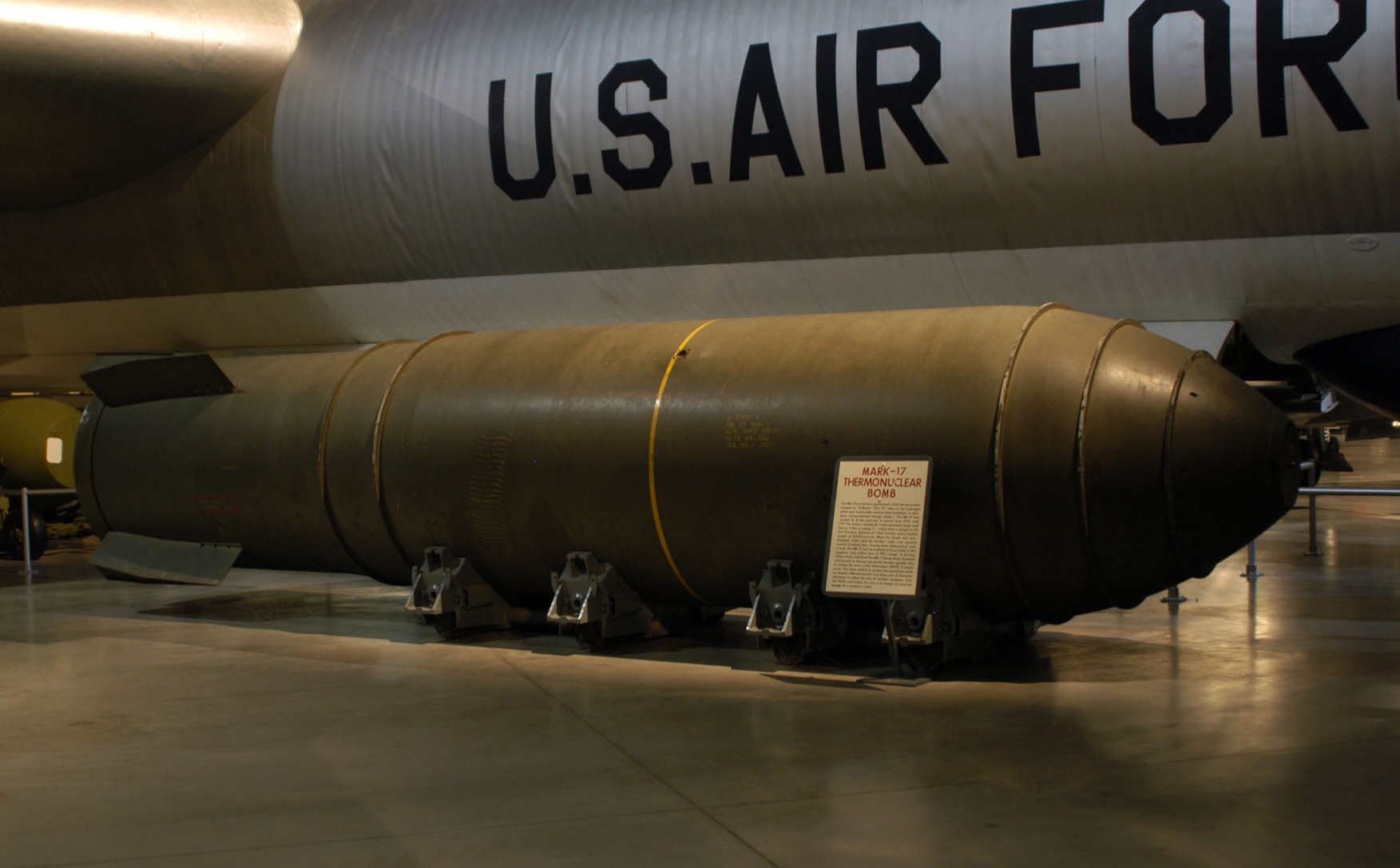
Between 1946 and 1954, 384 B-36 Peacemakers were built. They were never used in combat. Only four still exist.
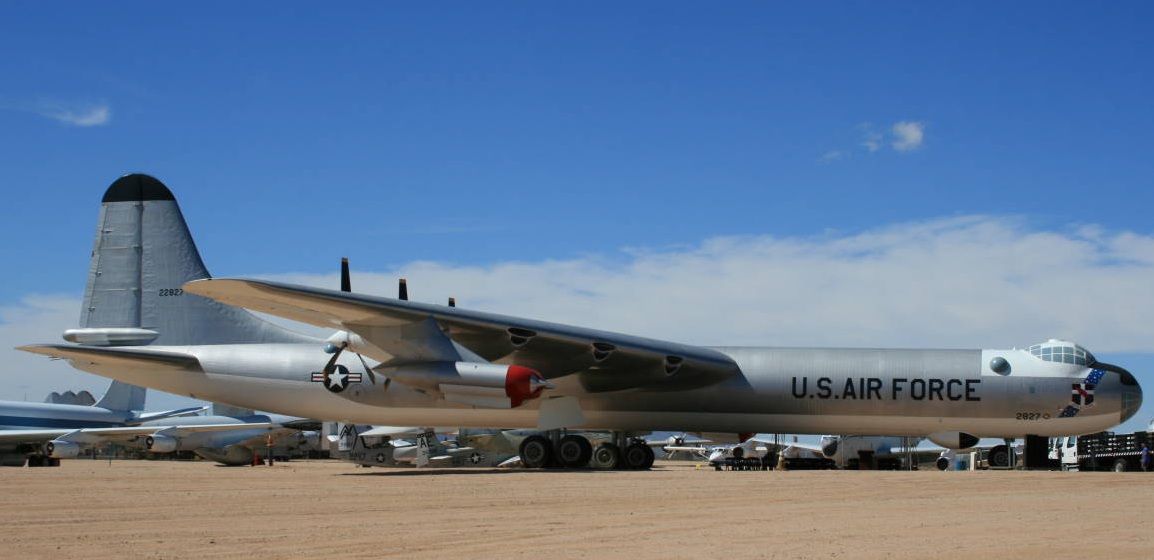
TDiA has received an number of comments recently regarding the safety of the Convair B-36 Peacemaker strategic bomber. Based on our research, out of the 384 built, 27 B-36s were lost in accidents between 1950 and 1957, amounting to just 7% of the fleet. 165 crew members were killed. The most common cause seems to be a fire following a landing gear collapse. The first, a B-36B, was lost on 14 February 1950. That incident is described at https://www.thisdayinaviation.com/13-february-1950/ . On 27 April 1951, a flight of four North Americaan Aviation F-51D Mustangs attacked a B-36D over Oklahoma. One fighter collided with the bomber, which crashed, resulting in the death of 12 of the 17 airman on board. (The F-51D pilot was also killed.) 6 May 1951, a B-36D crashed while attempting to land in high winds at Kirtland AFB, New Mexico. 23 of 25 on board were killed. 22 August 1951, a taxiing RB-36E collided with a parked RB-36E, which was destroyed. No injuries. 29 January 1952, a B-36D landed short of the runway and skidded into a snow bank at Fairchild AFB, Washington. The aircraft was destroyed by fire, but there were no fatalities. 6 March 1952, a B-36F was destroyed by fire while parked. A fuel leak was caused when the left landing gear failed on landing. There were no fatalities. 15 April 1952, a B-36D overran the runway during a maximum weight takeoff at Fairchild AFB, WA, because flight control trim had been incorrectly set. The aircraft was destroyed by fire. 15 of 17 on board were killed. 28 May 1952, a B-36F returning to Carswell AFB after takeoff due to a loose cowling, crashed and caught fire when its landing gear collapsed on landing, 7 on board were killed. 4 August 1952. A B-36F was destroyed by fire while parked at Carswell AFB. While being fueled, gasoline overflowed from a fuel vent and was ignited by a ground power unit. No injuries or deaths. 13 February 1953, a B-36H was misdirected during a GCA approach to Goose Bay, Labrador. It crash landed on a hill. 2 of 17 on board were killed. 5 August 1952, a modified B-36D being flown by a Convair crew crashed in the ocean west of San Diego, California, when it’s number 5 engine caught fire, which then spread to the rest of the wing. 7 of 8 crewmen bailed out while the pilot remained at the controls to guide the bomber away from the populated area. He was killed. 1 crewman drowned. 4 crewmen received minor injuries. 18 February 1953, an RB-36H was destroyed by fire when it’s landing gear collapsed during landing at Walker AFB, New Mexico. Of the 22 on board there were no fatalities. 18 March 1953, an RB-36H was destroyed when it hit a hill in Labrador. The aircraft was off course and one-and-a-half hours ahead of schedule. All 23 on board were killed. 5 August 1953, an RB-36H went down in the Atlantic Ocean (cause not discovered at this time.) 19 of 23 on board were killed. 11 December 1953, a B-36D crashed into a mountain in poor visibility while on approach to Biggs AFB, Texas. (Not in GCA radar contact). 9 of 9 on board were killed. 26 February 1954, at Fairchild AFB, the landing gear of a taxiing B-36D collapsed, resulting in the aircraft being destroyed by fire. No fatalities among the 20 on board. 29 March 1954, a B-36D crashed while practicing a takeoff abort at Fairchild AFB. All 7 on board were killed. 27 August 1954, an RB-36H making its sixth practice night approach at Ellsworth AFB hit an obstruction on a hill with its left wing and crashed. (Obstruction lights were inoperative due to a lightning strike.) 26 of 27 on board were killed. [Altimeter was in error, GCA was out of calibration, resulting in the aircraft being 150 feet lower on the glide slope than it should have been.] 8 February 1955, a B-36D landed short of the runway during a practice landing at Carswell AFB, Texas. Landing gear was sheared off and the aircraft damaged beyond economical repair. No fatalities. 6 March 1955, a B-36D landing at Loring AFB, Maine, hit a wingtip on a snowbank, resulting in the aircraft being destroyed by fire. No fatalities but some (unknown how many) serious injuries among the 11 on board. 25 May 1955, a B-36J disintegrated in flight during a thunderstorm/tornado near Sterling City, Texas. All 15 on board were killed. (Lost outboard wing panels and all tail surfaces. Impacted in level attitude with little forward motion.) 4 January 1956, an RB-36H crashed on landing at Ellsworth AFB, South Dakota after uneven power reduction. Destroyed by fire. No fatalities. 19 January 1956, a B-36D made a hard landing at Biggs AFB, Texas. No fatalities. Aircraft damaged beyond economical repair. 15 November 1956, a B-36H lost power on takeoff from Lowry AFB, Colorado, due to fuel starvation. It crashed one mile short of the runway attempting an emergency landing at Stapleton Airport, Denver. Aircraft destroyed by fire. No fatalities among 21 on board. 6 June 1957, a B-36H was damaged beyond economical repair while flying through a thunderstorm near Carswell AFB, Texas. No fatalities. 9 November 1957, an RB-36H was destroyed by fire while parked at Ramey AFB, Puerto Rico. No fatalities… A major incident occurred 1 September 1952, when a tornado struck Carswell AFB. 61 B-36s on the ground were damaged. Most were repaired and returned to service within two weeks.
© 2019, Bryan R. Swopes